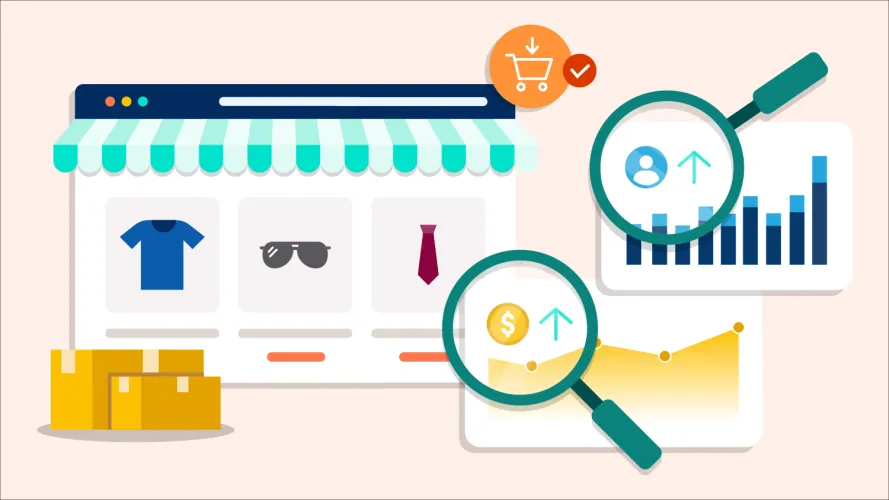The digital commerce landscape evolves faster than ever. New sales channels emerge, customer expectations shift overnight, and once-modern tech stacks quickly become outdated. For most enterprises, the question isn’t whether to modernize — it’s how to evolve without tearing everything down.
That’s where Commerce Engine changes the game.
As a next-generation, API-first commerce platform, Commerce Engine empowers enterprises to replatform without rebuilding — unlocking true composability, speed, and long-term scalability. Whether managing global D2C operations or integrating advanced marketing automation, it provides the flexible foundation modern commerce requires.
1. The Replatforming Dilemma
Historically, replatforming has meant major risk — lengthy timelines, escalating costs, and interruptions that stall innovation. Legacy monolithic systems, once reliable, now act as bottlenecks. Every enhancement introduces new dependencies and technical debt.
Traditional thinking says modernization requires starting from scratch. But in the composable era, that’s no longer the case.
Composable architecture allows brands to evolve instead of replace — upgrading components gradually while keeping business operations uninterrupted. This modular evolution ensures business continuity and faster ROI.
Commerce Engine was purpose-built to make this incremental transformation achievable.
2. Commerce Engine: An API-First Core for Modern Commerce
Unlike traditional commerce platforms, Commerce Engine is built around API-first, headless, and composable principles. It decouples core commerce logic from presentation and integrations — giving teams the freedom to innovate without backend constraints.
With this approach, organizations can refresh their front-end experience, introduce new integrations, or expand globally — all without re-architecting the entire system.
Key capabilities include:
- Comprehensive GraphQL and REST APIs across domains like catalog, pricing, cart, checkout, and order management.
- Independent microservices that can be updated or scaled on demand.
- Event-driven architecture for real-time system synchronization.
- Integration-ready framework for CRMs, ERPs, CDPs, and marketing automation tools.
In essence, Commerce Engine offers enterprises the freedom to evolve at their own pace — not their platform’s.
3. Composability in Action: Build Once, Deploy Everywhere
True composability gives businesses freedom of choice — to integrate the best tools for each function while maintaining a seamless experience.
Commerce Engine’s modular architecture supports a variety of use cases:
- Front-end flexibility: Manage multiple storefronts (web, mobile, kiosk, or marketplace) powered by one backend.
- Integration agility: Add new tools for payments, fulfillment, or analytics without disruption.
- Iterative modernization: Replace legacy systems gradually — pricing today, checkout tomorrow.
Instead of a single massive overhaul, modernization becomes a continuous, low-risk evolution where every upgrade delivers immediate value.
4. Powering D2C E-Commerce Solutions
The rise of direct-to-consumer (D2C) commerce has redefined how brands interact with their audiences. Today, brands seek to own their entire customer journey — from browsing to checkout to loyalty.
Legacy platforms struggle to support this model, often falling short in personalization, omnichannel consistency, and integration flexibility.
Commerce Engine changes that, offering:
- Unified product and pricing APIs to ensure consistent cross-channel experiences.
- Built-in personalization integrations with CDPs and recommendation engines.
- Scalable promotions and loyalty modules for retention.
- Multi-region and multi-currency readiness for international growth.
Because it’s API-first, D2C brands can experiment rapidly — launching new experiences, campaigns, or regions without backend constraints.
Commerce Engine turns D2C into a strategic growth driver, not just an extra channel.
5. Seamless Marketing Automation Integration
Modern commerce extends beyond transactions — long-term success relies on personalized engagement. To achieve this, marketing automation must connect directly to live commerce data.
Commerce Engine enables this with event-driven APIs and real-time webhooks, syncing data seamlessly with automation tools such as Salesforce Marketing Cloud, Klaviyo, HubSpot, and Iterable.
Practical applications:
- Triggering reminder emails for abandoned carts or wishlists.
- Sending automated replenishment prompts for repeat items.
- Launching tailored upsell campaigns post-purchase.
- Retargeting valuable customers based on purchase history.
Because integrations are composable and API-based, marketers can run campaigns independently of engineering teams, dramatically reducing time-to-market and maximizing ROI.
6. Enterprise-Ready Flexibility and Governance
Enterprise commerce solution was engineered for enterprise-grade scale, compliance, and control — ideal for global organizations managing complex digital operations.
Enterprise-focused capabilities include:
- Granular permission models to manage distributed teams and hierarchies.
- Data residency and privacy tools to ensure compliance with GDPR, CCPA, and regional laws.
- Comprehensive audit logs for API observability.
- CI/CD compatibility enabling continuous deployment with zero downtime.
With composability, governance also becomes simpler — allowing different teams (pricing, catalog, checkout) to operate autonomously while maintaining shared standards for security and compliance.
7. Phased Replatforming: A Smarter Modernization Path
Commerce Engine supports a phased replatforming strategy — a step-by-step modernization path that minimizes risk and maximizes progress.
Typical roadmap:
- Phase 1: API Integration — Expose existing catalog and order data through Commerce Engine APIs to enable new front-ends or marketing connectivity.
- Phase 2: Modular Checkout & Cart — Implement high-performance checkout and cart modules to accelerate D2C e-commerce solutions.
- Phase 3: Gradual Domain Migration — Transition legacy product, pricing, and promotion systems into native modules while maintaining ERP and PIM links.
- Phase 4: Continuous Optimization — Leverage analytics and automation to refine personalization and boost conversions.
Each phase drives measurable business value — without downtime or full rebuilds.
8. Business Outcomes: Agility Without Disruption
Enterprises adopting Commerce Engine see tangible results across three dimensions:
- Speed: Deliver new digital experiences and integrations up to 60% faster.
- Efficiency: Eliminate high-cost replatforming projects through incremental upgrades.
- Innovation: Experiment with AI, search, and marketing tools — without backend risks.
Most importantly, composability fosters resilience. As markets shift, teams can adapt instantly — extending or swapping services instead of waiting for multi-year replatforming cycles.
9. The Future of Composable Commerce
Digital commerce is entering a new era — one defined by continuous reinvention. The leaders will be those who can experiment freely, scale globally, and evolve without technical constraints.
Commerce Engine represents this future — a composable enterprise commerce foundation that combines flexibility, scalability, and extensibility.
Whether supporting global D2C expansion or orchestrating advanced automation, it empowers enterprises to innovate continuously, not just occasionally.
Conclusion
Replatforming no longer means starting from scratch. With Commerce Engine, businesses can modernize intelligently, integrate seamlessly, and scale sustainably.
By merging API-first architecture with modular design and robust integrations, Commerce Engine delivers true composability — enabling enterprises to evolve faster, operate smarter, and deliver exceptional customer experiences across every touchpoint.
The future of commerce isn’t about replacing platforms.
It’s about adopting a flexible architecture that grows with your business — and Commerce Engine is leading the way.






